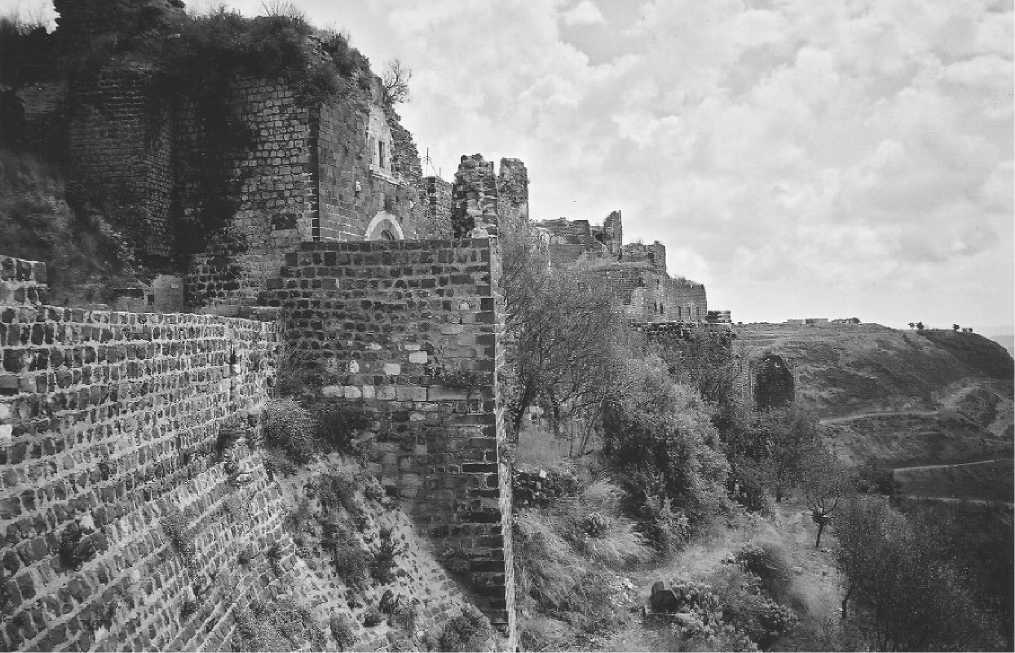Second wife of the Byzantine emperor Manuel I Komnenos.
Maria was born around 1140, the daughter of Constance, princess of Antioch, and her husband, Raymond of Poitiers. The marriage was part of Manuel’s policy of rapprochement

Outer defenses, Margat. (Courtesy Graham Loud)
With the Frankish states of Outremer and was approved by King Baldwin III of Jerusalem. Contemporaries commented on Maria’s outstanding beauty and charm. After the birth of her son Alexios II, Maria was appointed as regent should his father die before he came of age, on condition that she become a nun. This she nominally did after Manuel’s death in 1180, taking the name of Xene.
Maria’s short period as regent was unpopular. She appointed the protosebastos Alexios Komnenos, Manuel’s nephew, as her chief minister; he may also have been her lover. She antagonized Manuel’s daughter Maria and her husband, the Caesar John (Ranieri) of Montferrat, who rebelled against her in 1182. This left the way open for a coup d’etat led by Andronikos (I) Komnenos, who became regent and subsequently emperor. Maria was banished from court. In the summer of 1183, she was accused of inciting her brother-in-law Bela III of Hungary to attack Byzantium. She was imprisoned, murdered, and buried in an unmarked grave on the seashore.
-Rosemary Morris
Bibliography
Brand, Charles M., Byzantium Confronts the West, 1180-1204 (Cambridge: Harvard University Press, 1968).
Garland, Linda, “Morality versus Politics at the Byzantine Court: The Charges against Marie of Antioch and Euphrosyne,” ByzantinischeForschungen 24 (1997), 259-295.
-, Byzantine Empresses: Women and Power in
Byzantium, ad 527-1204 (London: Routledge, 1999).
Gentile Messina, Renata, “Un caso di Mimesis al servizio della propaganda neW’Epitome di Giovanni Cinnamo,” Byzantion 70 (2000), 408-421.




 World History
World History









